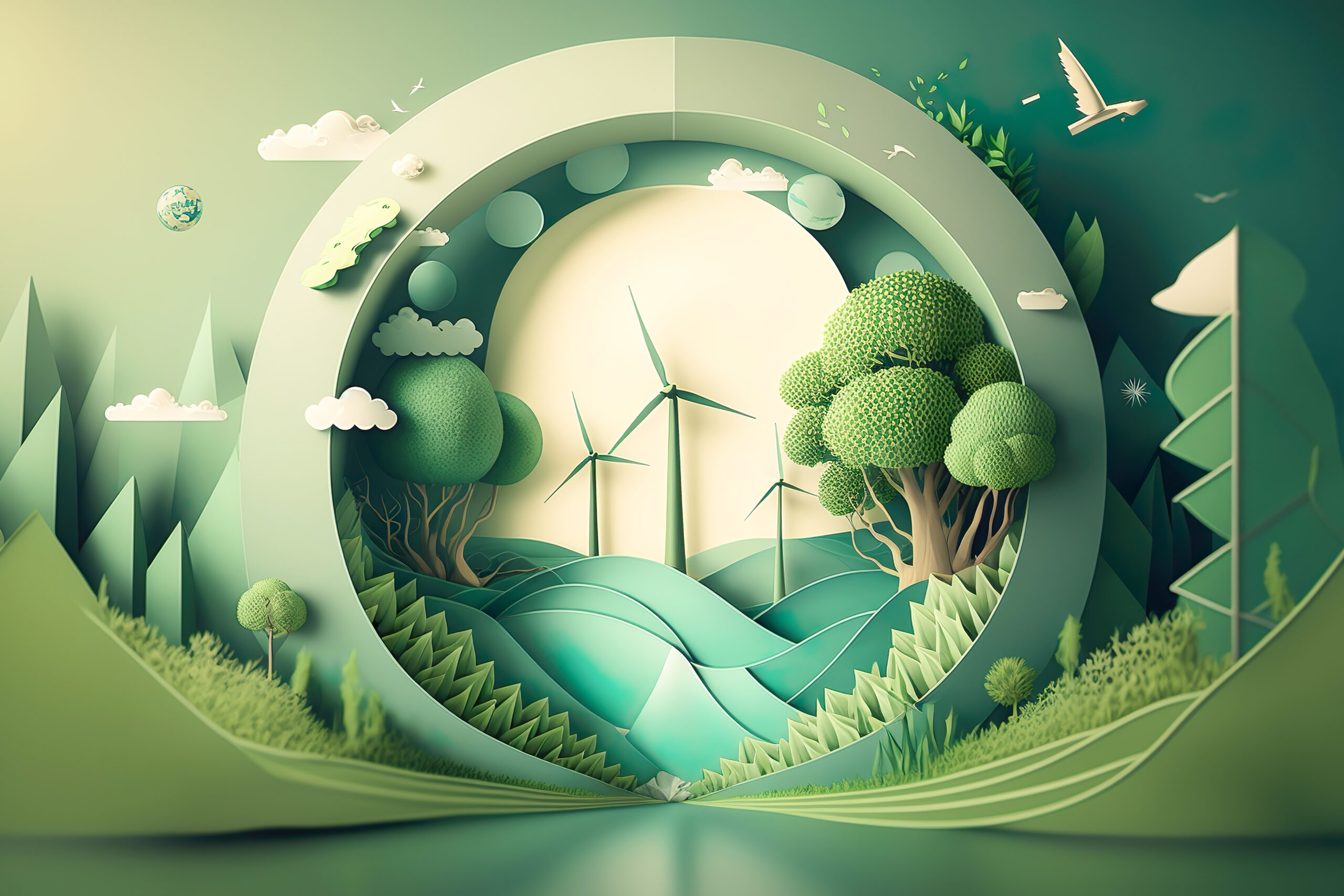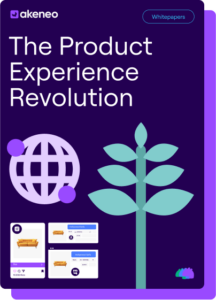In a world where reckless consumerism and a “take, make, and dispose” mindset dominate, understanding the importance of the circular economy is more vital than ever. Discover the principles of the circular economy and why reliable product information is essential for its success. Plus, learn how adopting a circular approach not only minimizes environmental impact and conserves resources but also drives innovation, resilience, and customer trust.

Keywords
Most of us have experienced moments where we've tossed an item after its use or misplaced it and quickly bought a replacement. It’s a common habit, often tucked away as an afterthought.
If that sounds familiar, you're not alone.
While it may feel harmless in the moment, the reality is that these patterns can have lasting consequences when they become routine. Small habits, like frequently replacing or discarding items, contribute to a culture of reckless consumerism—a mindset that amplifies waste and poses serious risks to both people and the environment.
Fast fashion perfectly embodies this disposable culture. Its name reflects the rapid production and distribution of trendy clothing sold at low prices, making it easier for consumers to purchase and discard their old ones. The accelerated changes in the global industry are driven to meet consumer demand, failing to show a regard for quality but instead prioritizing quantity. According to Business Insider, the fashion industry consists of 10% of global carbon emissions, and microplastics are predicted to make up to 31% of plastic pollution in the ocean.
Along with fast fashion, ‘serial returners’ also ramp up overconsumption. The witty term refers to customers who purposefully buy more products than they need with the aim of returning a number of them. Besides mounting more waste, this practice contributes to raising emissions as sending back products requires more transportation, which doubles the amount of Co2 emissions.
So what is the solution to this overarching problem?
The circular economy! This economic structure helps victims of excessive materialism by reducing damage to the environment and providing customers with a place to purchase second-hand, high quality products.
The circular economy refers to a business model that aims to minimize waste by reusing, repairing, refurbishing, and recycling products, materials, and resources. It contrasts against the traditional linear economy, which promotes the taking, making, and disposing of products.
At its heart, the circular economy redefines our approach to consumption and production, making it more sustainable and mindful of the planet’s resources. This framework is built on three guiding principles that work together to drive positive change:
The circular economy turns the traditional model on its head by focusing on designing products and systems that maximize resource use and minimize waste from the outset.
It combats the flaw of the linear system in which products are designed in a way that they can’t be recycled or reused, forcing the end of their journey to be disposed of as waste.
In a circular economy, products are designed for durability, reuse, and recycling to keep them circulating within the economy rather than ending up directly in a landfill. This could be done through business models that focus on sharing a product between many users, or a refurbishment service dedicated to sprucing up old items. Companies and consumers alike benefit from this principle, as it supports sustainable business practices while fostering more responsible consumer habits and ensuring consumers are getting the most out of a product that they pay for.
A truly circular economy not only seeks to minimize harm but actively works to improve the environment. By integrating nature-focused practices into product and consumption cycles, like using renewable energy in manufacturing processes or contributing to organizations that offset carbon emissions, organizations can build a system that sustains both people and the planet without sacrificing product quality.
The circular economy is a more sustainable alternative to the traditional model because of its ability to reduce waste and pollution by extending the lifecycle of products, encouraging recycling or reselling, and implementing waste reduction strategies.
Product longevity has a positive impact on the environment, even more so as it plays a central role in the circular economy. A product’s lifespan is extended by its durability, allowing it to last longer than one cheaply made. A well-crafted product encourages consumers to shop mindfully, which in itself is cost-effective. When consumers shift their mindset from quantity to quality, return rates steadily decline which lowers the carbon footprint of transportation.
Plus, by creating a system that prioritizes durability, reuse, and recycling, businesses can become more resilient to supply chain disruptions and resource scarcity. This resilience is crucial in a world where supply chains are increasingly vulnerable due to climate change, geopolitical tensions, economic shifts, and changes in legislation.
The circular economy also fosters economic growth and job creation by opening new opportunities in areas like resource recovery, repair services, and recycling industries. These sectors can contribute significantly to local economies while promoting sustainable development. On a larger scale, the shift to a circular model supports environmental sustainability by reducing the overall demand for resource extraction, thus helping to preserve ecosystems and biodiversity.
In order to successfully execute the circular model, businesses need to prioritize creating a foundation of reliable, consistent product information. Why? A core principle of the circular economy is the continuous circulation of products and materials, which requires accurate data on availability, quality, and lifecycle. This data allows businesses to track and manage resources effectively, ensuring that materials are reused, refurbished, or recycled properly. Without dependable information, resource management becomes inconsistent, leading to inefficiencies and waste.
Additionally, reliable information supports product design and innovation. Designers need access to detailed insights about sustainable and durable materials and the processes for disassembly and repurposing. This enables the creation of products that align with circular economy principles and minimize waste.
Trust and transparency among stakeholders—manufacturers, suppliers, retailers, and consumers—are also built on reliable information, as well as effective reverse logistics, which involves moving products back through the supply chain for reuse or recycling. Incomplete or outdated information can cause logistical challenges, increased expenses, and wasted resources.
Reliable information is the backbone of the circular economy as it can facilitate efficient resource management, innovative product design, transparency, and consumer engagement. Without accurate and dependable data, the effectiveness of the circular economy diminishes, leading to missed opportunities to reduce waste and maximize resource value.
And to have trustworthy data, you need a trustworthy Product Information Management (PIM) solution.
PIM allows businesses to store, centralize, manage, and enrich product data whilst acting as a single source of truth, ensuring accuracy and completeness, and providing customers with correct information.
The traditional ‘take, make, and waste’ model brings a lot of distress to the ecosystem, contributing to major environmental issues such as landfills and carbon emissions, and hinders the customer experience by encouraging reckless consumption.
By keeping resources, products, and materials in rotation and designing products for longevity, reuse, and repair, the circular economy minimizes waste and environmental impact, reduces the need for raw materials, lowers production costs, and benefits businesses and consumers by elevating the customer experience. And by being more eco-conscious, businesses can adopt better practices that help build a trusting relationship with consumers who favor sustainability, building an advantage over their competitors who fail to apply the same practices and principles.
Shifting from a linear to a circular mindset contributes to a healthier planet while achieving long-term profitability and customer satisfaction, ultimately paving the way for a sustainable future where economic growth and environmental stewardship go hand in hand.
Discover the latest shift in consumer behavior, and learn how your organization can combat reckless consumerism with an enhanced product experience.


Discover how Drawer, a fast-growing online furniture retailer, transformed its product data management from a chaotic, manual process to a...
Read more
Keeping regulatory information accurate and up to date is vital to avoid costly penalties and safeguard consumer trust. In this guest blog by Akeneo...
Read more
The retail industry is evolving fast, and 2025 is set to bring exciting changes. Whether it’s the revival of in-store shopping, the rise of social...
Read more